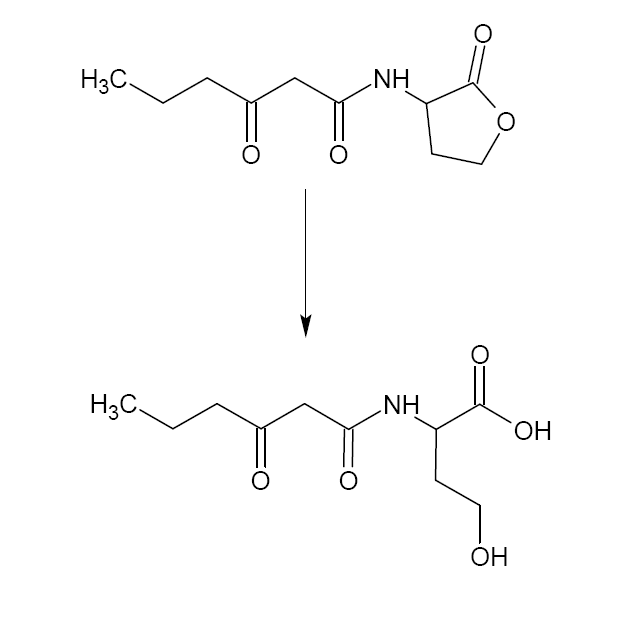Team:KULeuven/Project/Reset
From 2008.igem.org
(→Components) |
(→Action) |
||
| Line 13: | Line 13: | ||
===Action=== | ===Action=== | ||
| - | + | This device was conceived to reset the [https://2008.igem.org/Team:KULeuven/Project/Inverter '''Timer''']. | |
| + | |||
| + | When significant input (re-)emerges, lactonase is produced. It will then convert all available intracellular 3OC6HSL at that time to a hydroxy-acid, thereby inactivating it and efficiently removing it from the active system. In this way, the timer is reset and the cell may live to see another day. | ||
| + | |||
| + | Originally, a pulse of lactonase was thought to do the job, but modeling proved that the amount of lactonase produced in that system was not enough. In the simplified version described here, the amount of lactonase produced should be high enough to provide a thorough reset of our system. | ||
| + | |||
| - | |||
{{:Team:KULeuven/Tools/Components}} | {{:Team:KULeuven/Tools/Components}} | ||
Revision as of 10:36, 2 September 2008
Contents |
Reset
BioBricks
Components
The system is dependent on the output of the filter, and has therefore got a T7 RNA polymerase promoter ([http://partsregistry.org/Part:BBa_I712074 BBa_I712074]) followed by a RiboLock ([http://partsregistry.org/Part:BBa_J23078 BBa_J23078]). The aiiA gene ([http://partsregistry.org/Part:BBa_C0060 BBa_C0060]), short for autoinducer inactivation, is placed downstream of this AND-gate and codes for lactonase, an enzyme that hydrolyses the 3OC6HSL ester bonds. ([http://www.nature.com/nature/journal/v411/n6839/full/411813a0.html reference])
Action
This device was conceived to reset the Timer.
When significant input (re-)emerges, lactonase is produced. It will then convert all available intracellular 3OC6HSL at that time to a hydroxy-acid, thereby inactivating it and efficiently removing it from the active system. In this way, the timer is reset and the cell may live to see another day.
Originally, a pulse of lactonase was thought to do the job, but modeling proved that the amount of lactonase produced in that system was not enough. In the simplified version described here, the amount of lactonase produced should be high enough to provide a thorough reset of our system.
 "
"




 Input
Input Output
Output Filter
Filter InverTimer
InverTimer Reset
Reset Cell Death
Cell Death Memory
Memory